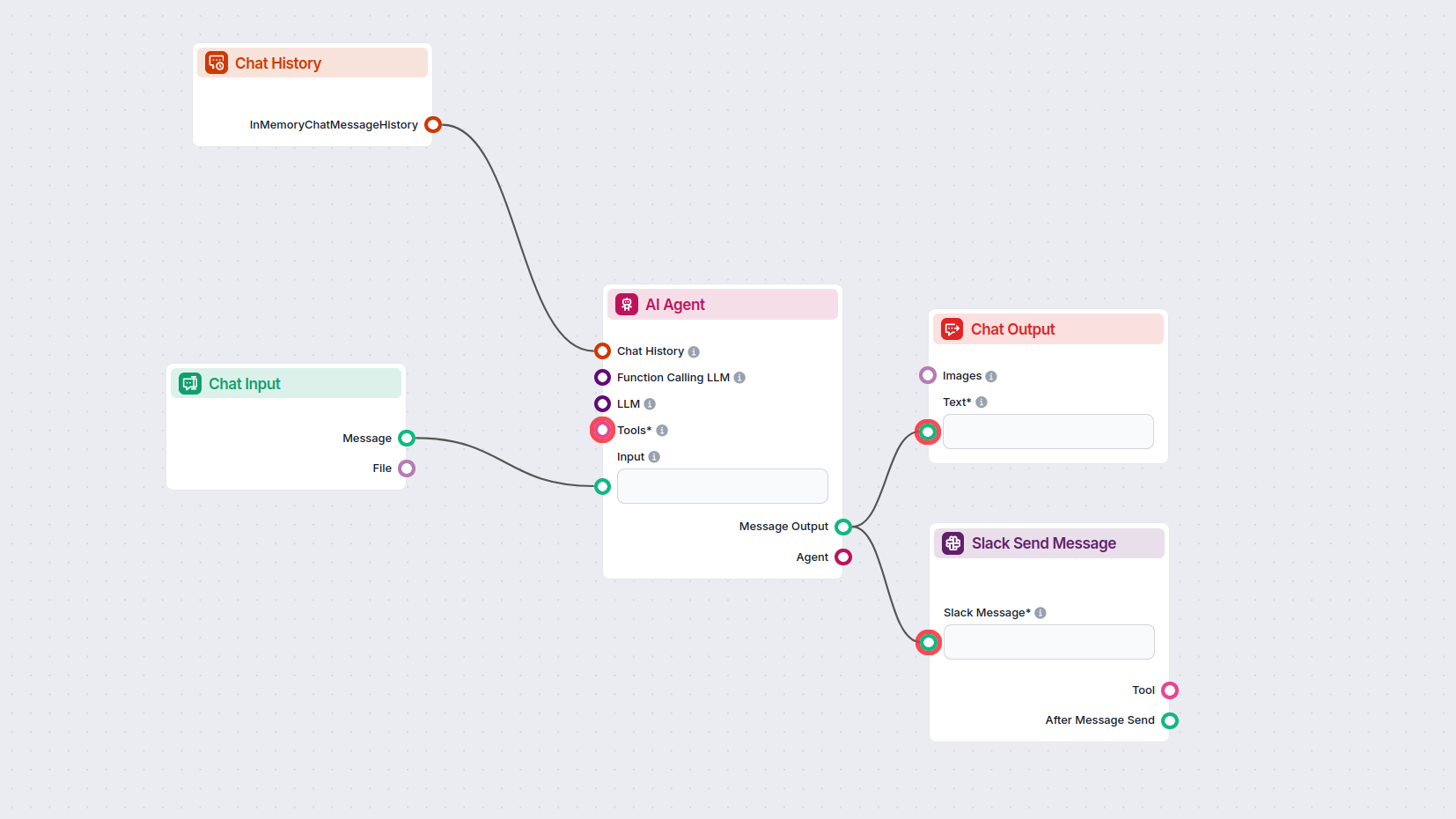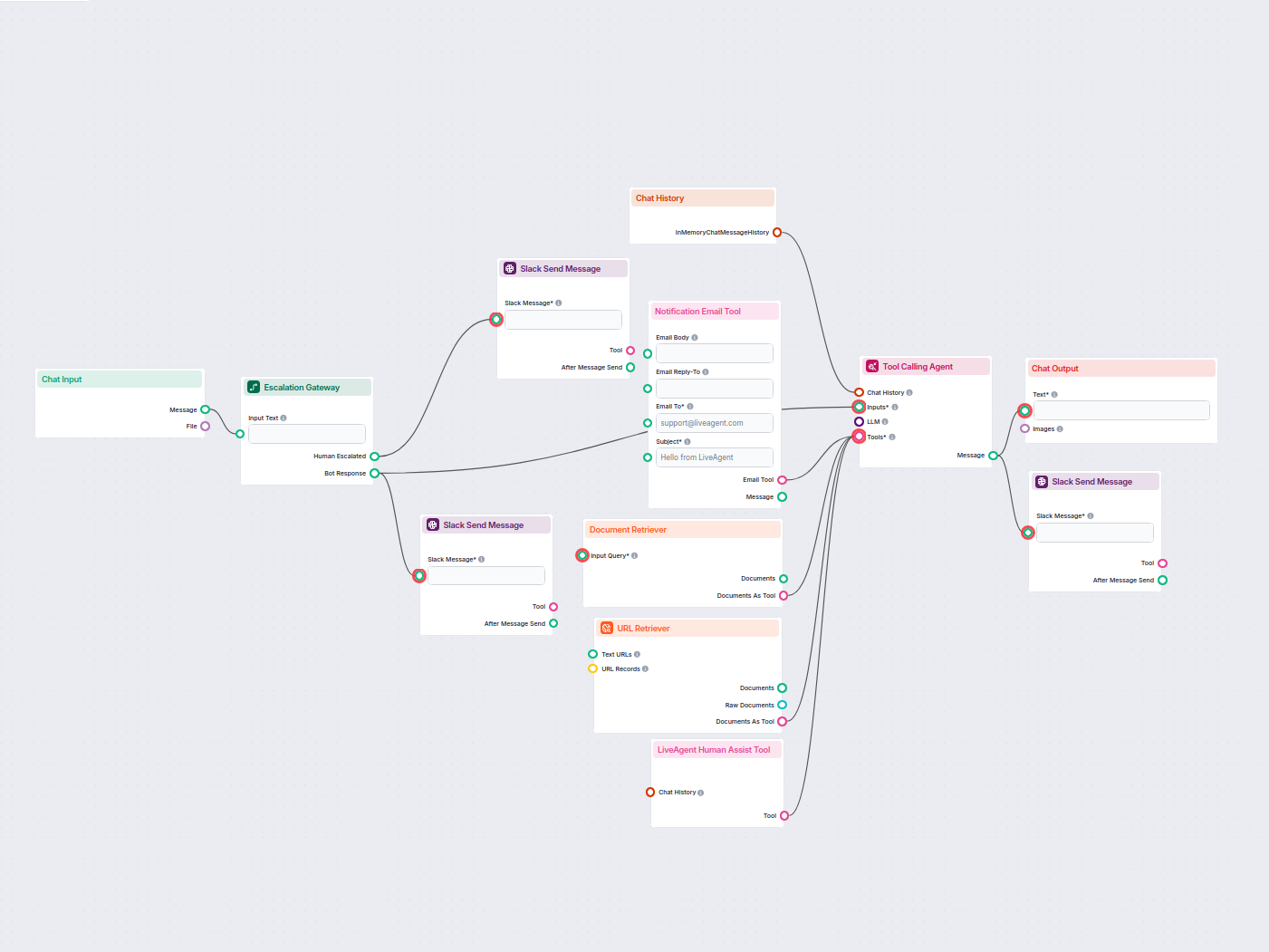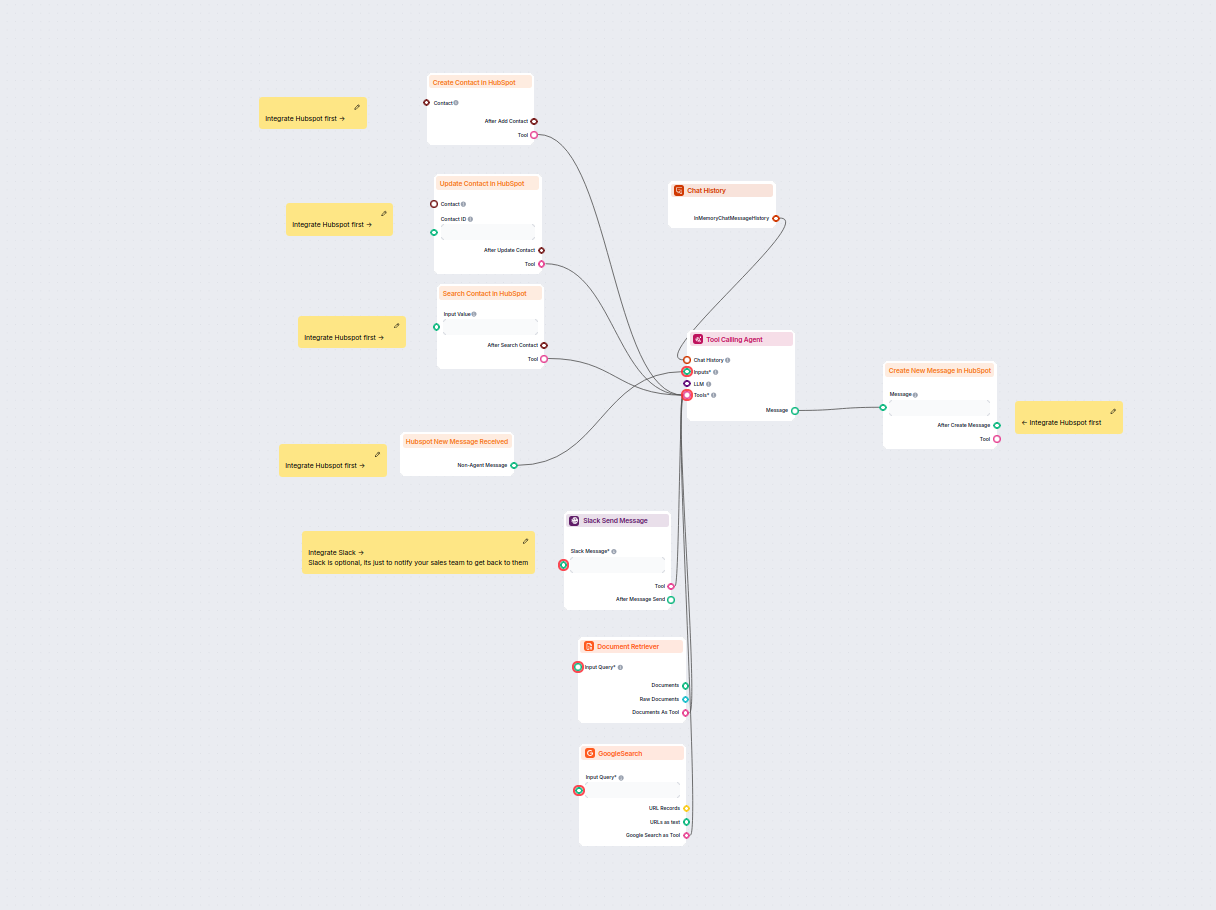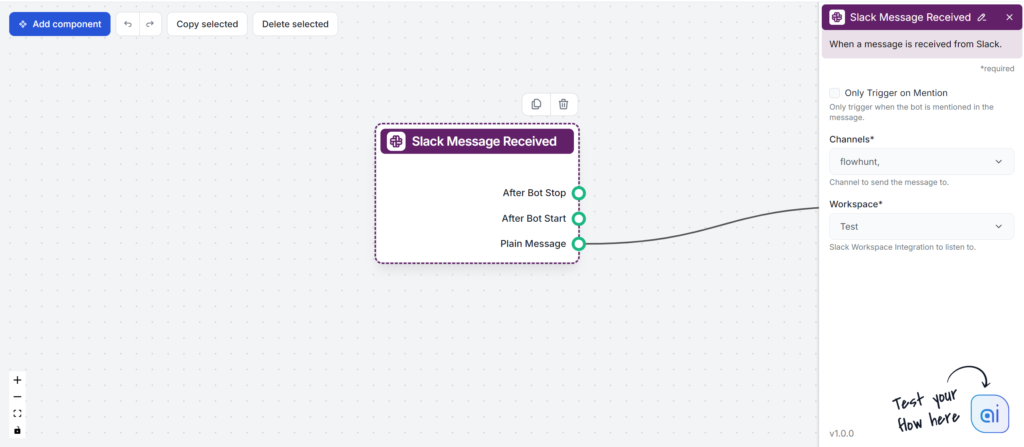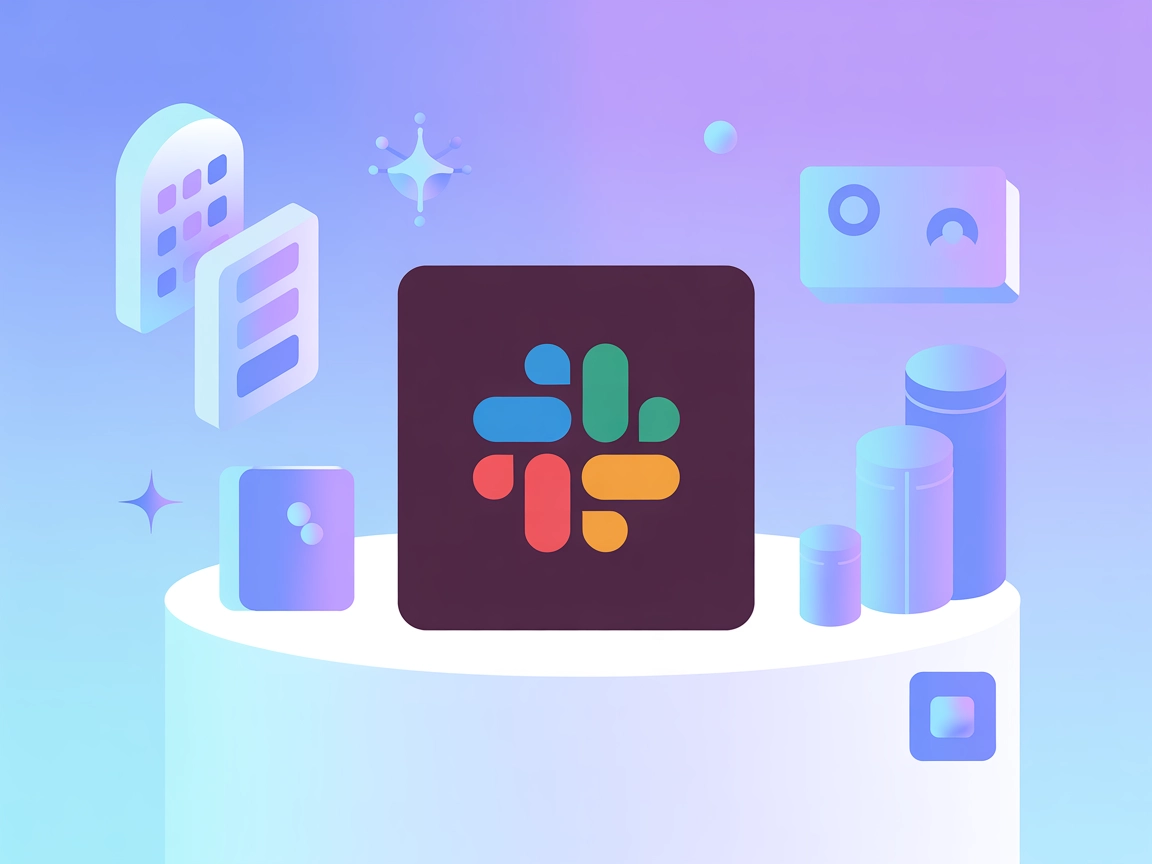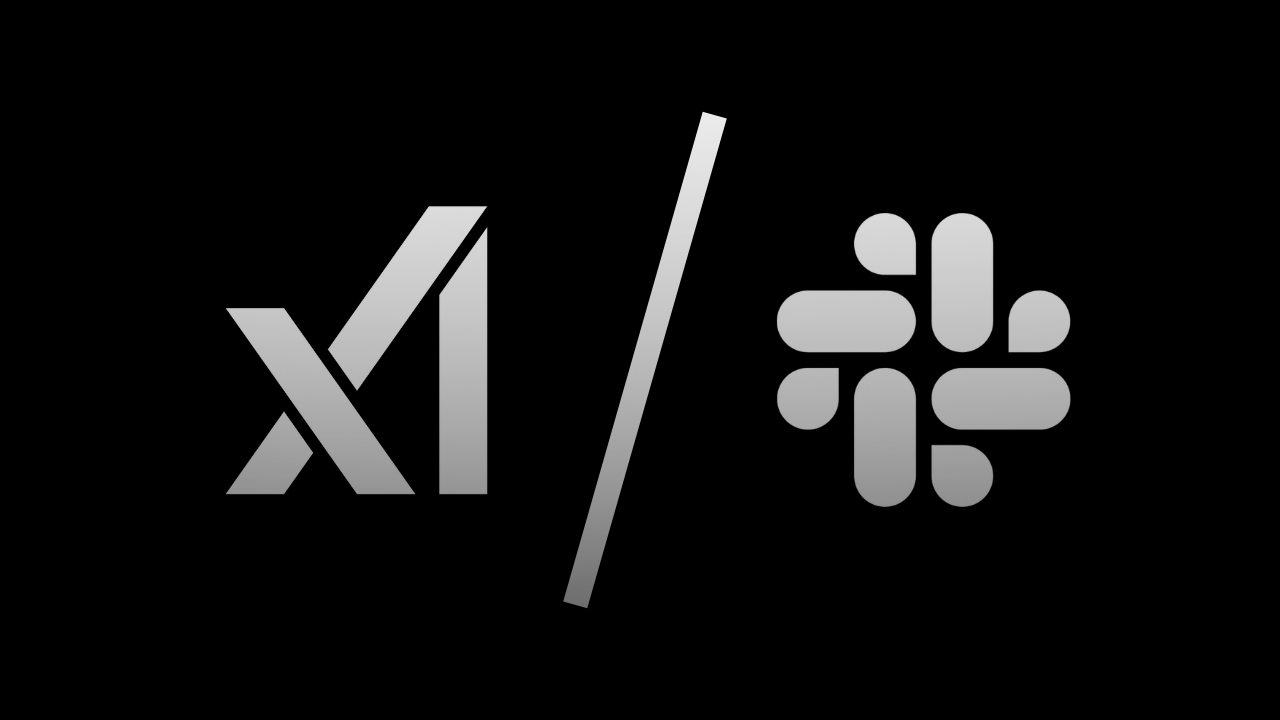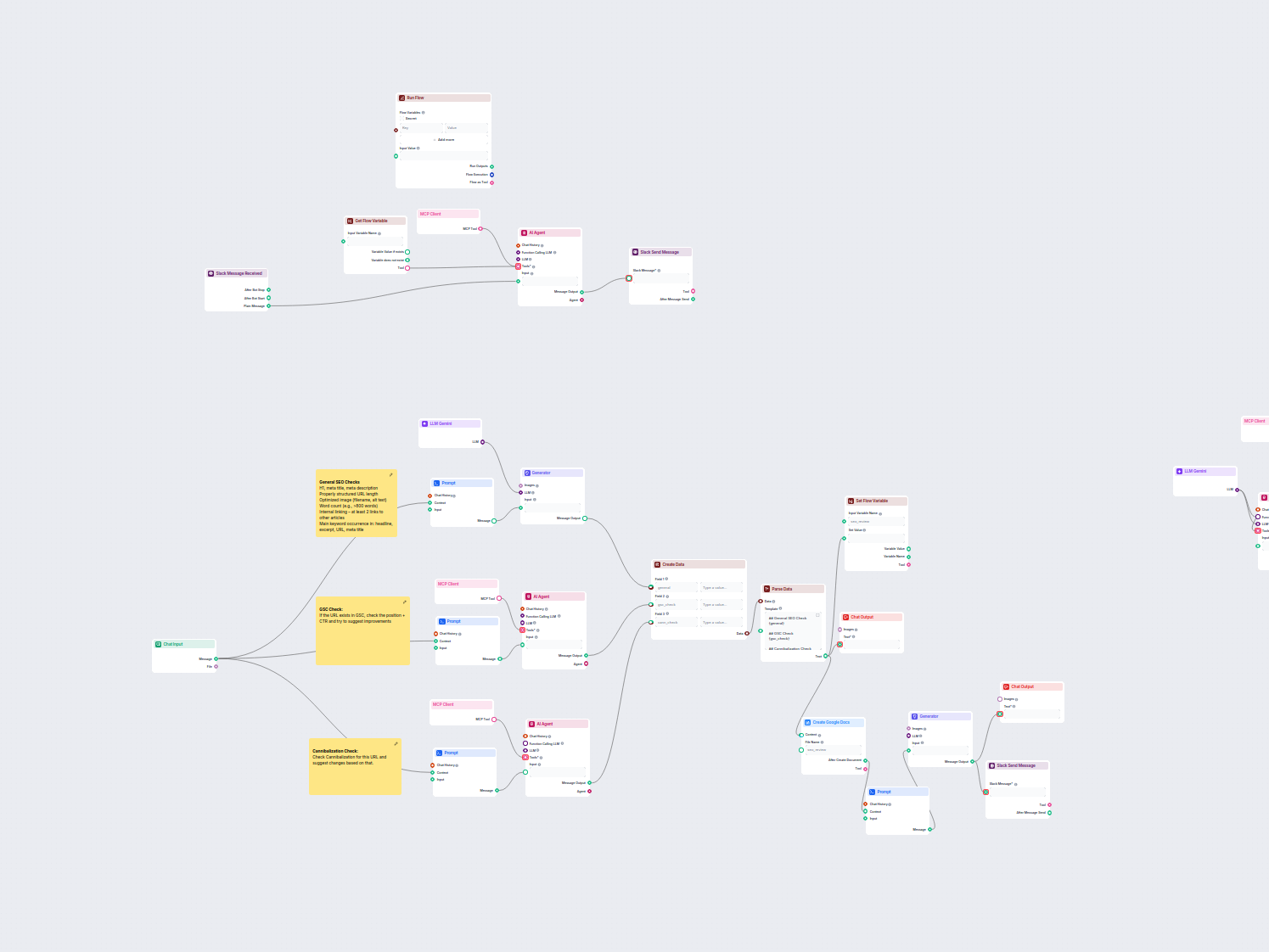
Automatisierter SEO-Audit & Slack-Workflow
Dieser Workflow automatisiert die SEO-Prüfung und den Audit-Prozess für Webseiten. Er analysiert den Seiteninhalt hinsichtlich SEO-Best Practices, führt Prüfung...
Komponentenbeschreibung
This component represents Flowhunt’s Slack messages back to you. You can think of it as an output but for Slack instead of chat. It also lets you control where and how FlowHunt sends messages and who it notifies.
Using this component requires an active Slack Integration. If you haven’t integrated Slack yet, follow this guide.
The Slack Send Message component allows you to automatically send messages to Slack channels as part of your AI-driven workflow. This is especially useful for integrating notifications, alerts, or status updates into your processes, enabling seamless communication between your AI system and your team in Slack.
This component sends a custom message to a specified Slack channel or thread. It can be used to automate team communications, send results or summaries, or trigger alerts based on events or decisions made in your workflow. You can format the message in markdown, mention specific groups, and control message threading, giving you flexibility in how information is shared with your team.
@everyone, @channel, or @here.| Parameter | Description | Required | Example/Options |
|---|---|---|---|
| Workspace | Slack Workspace Integration to use. | Yes | Select from connected Slack workspaces |
| Channels | Channel to send the message to. | Yes | Select from available channels |
| Slack Message | The actual message text to send. | Yes | Any message text |
| Format as Markdown | If true, formats the message as markdown. | No | true/false |
| Mentions | Mentions to include in the message. | No | None, @everyone, @channel, @here |
| Follow Up on Thread | If true, sends the message as a reply to an existing thread. | No | true/false |
| Thread Timestamp | Timestamp of the thread to reply to (used if replying in a thread). | No | Slack thread timestamp string |
| Tool Name | Internal reference name for this tool (used by AI agents). | No | Any string |
| Tool Description | Description to help agents understand how to use this tool. | No | Any string |
| Verbose | Whether to print verbose output for debugging. | No | true/false |
| Name | Type | Description |
|---|---|---|
| Tool | Tool | A tool object representing the configured Slack sender. |
| After Message Send | Message | The output after sending the message to Slack. |
Integrating Slack messaging into your AI workflow bridges the gap between automated processes and human communication. It ensures your team is always informed, reduces manual messaging tasks, and can trigger faster responses to events detected by your AI system.
By using this component, you can keep your team in the loop effortlessly and make your AI workflows more interactive and responsive.
Format as Markdown:
If checked, the messages are formatted in Markdown. If unchecked, the messages have no formatting.
Follow Up on Thread:
Ensures FlowHunt answers within a message thread instead of new channel messages.
Thread Timestamp:
Allows you to limit all FlowHunt responses to a single thread.
Mentions:
FlowHunt will need to call on you from time to time. For example, when a chatbot user requests to be transferred to a human. FlowHunt will then get your attention by using the mention you’ve selected.
@everyone will notify everyone in the workspace@channel will notify people who are members of the channel the Flow is active in@here will only notify the channel members who are currently onlineChannel:
Pick the channels to which you want to add FlowHunt.
Workspace:
Pick the workspace to which you want to add FlowHunt.
Picking the workspace and channels in necessary for the Flow to work. All other settings are optional.
Um Ihnen den schnellen Einstieg zu erleichtern, haben wir mehrere Beispiel-Flow-Vorlagen vorbereitet, die zeigen, wie die Slack-Nachricht senden-Komponente effektiv genutzt wird. Diese Vorlagen präsentieren verschiedene Anwendungsfälle und Best Practices und erleichtern Ihnen das Verständnis und die Implementierung der Komponente in Ihren eigenen Projekten.
Dieser Workflow automatisiert die SEO-Prüfung und den Audit-Prozess für Webseiten. Er analysiert den Seiteninhalt hinsichtlich SEO-Best Practices, führt Prüfung...
Stellen Sie einen intelligenten Kundensupport-Chatbot für LiveAgent bereit, der automatisch Besucherfragen beantwortet, Wissensdatenbankdokumente abruft und bei...
Dieser KI-gestützte Workflow automatisiert die Lead-Qualifizierung und das Kontaktmanagement in HubSpot. Der Chatbot sammelt Nutzerinformationen, recherchiert F...
Die Slack-Nachricht senden-Komponente ermöglicht es Ihnen, zu steuern, wie, wohin und an wen FlowHunt Slack-Nachrichten sendet, einschließlich Formatierung, Benachrichtigungen, Kanälen und Workspaces.
Sie können die Markdown-Formatierung, Thread-Antworten, Erwähnungen, Kanäle und Workspaces für Ihre Slack-Nachrichten anpassen.
Ja, eine aktive Slack-Integration ist erforderlich, um die Slack-Nachricht senden-Komponente in FlowHunt zu verwenden.
FlowHunt kann @everyone, @channel oder @here erwähnen, sodass Sie auswählen können, wer bei wichtigen Nachrichten oder Anfragen benachrichtigt wird.
Beginnen Sie mit dem Aufbau eigener KI-Lösungen und automatisieren Sie Slack-Nachrichten mit den leistungsstarken Funktionen von FlowHunt.
Diese Komponente stellt den Beginn eines Slack-Gesprächs mit FlowHunt dar. Sie ermöglicht es Ihnen, zu steuern, wann, wo und wie Flos Slack-Antworten ausgelöst ...
Integrieren Sie FlowHunt mit Slack, um Nachrichten zu automatisieren, Workflows auszulösen und Ihr Team mit KI-gestützten Flows auf dem Laufenden zu halten.
Cookie-Zustimmung
Wir verwenden Cookies, um Ihr Surferlebnis zu verbessern und unseren Datenverkehr zu analysieren. See our privacy policy.
